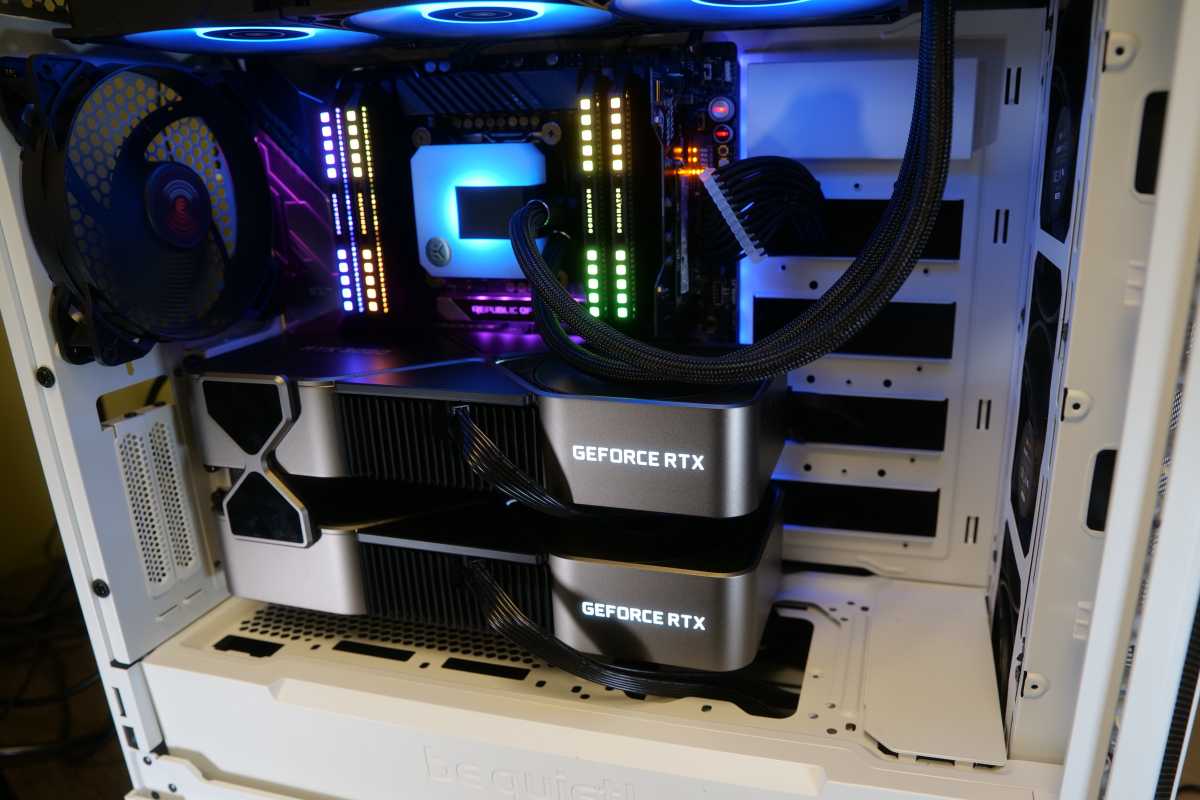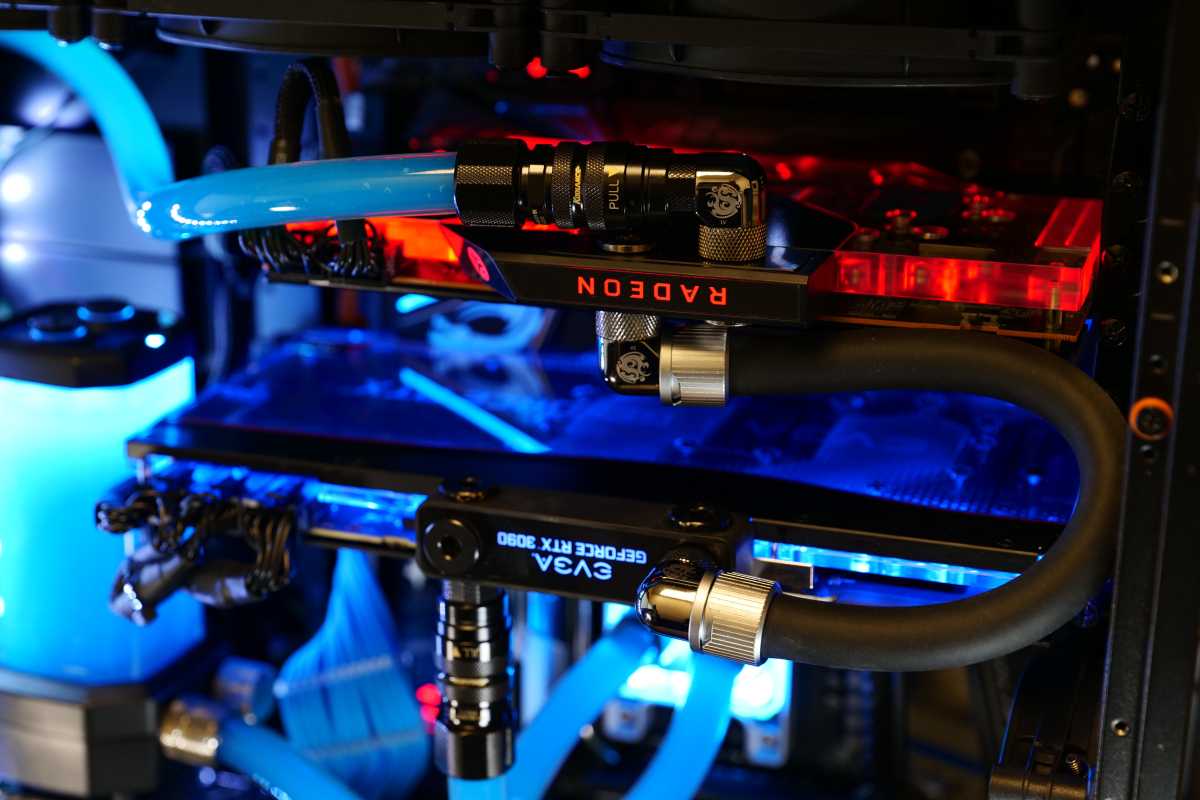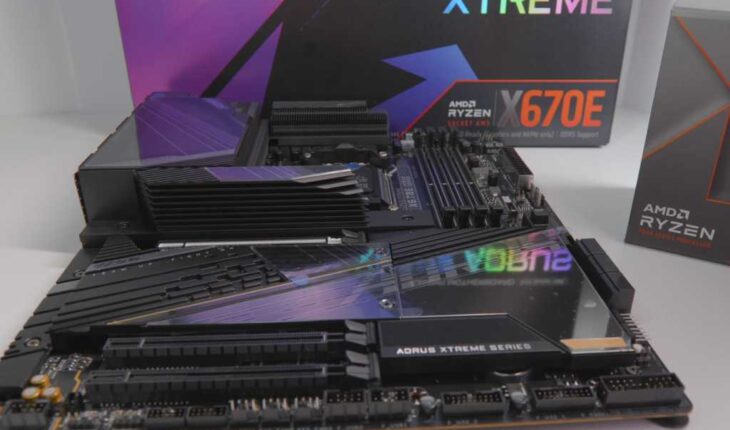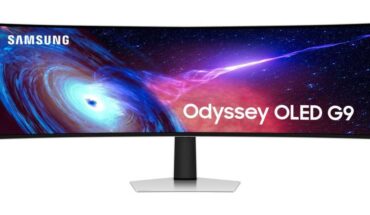1. PCIe graphics cards
If you have a desktop PC with at least an mATX motherboard or larger, chances are you have access to multiple PCIe slots.
If so, the top slot likely runs at PCIe x16, meaning 16 data lanes, which is ideal for high-bandwidth add-ins like a graphics card. And if you have a second slot, it likely runs at PCIe x8. That’s half the speed, and that’s why the top slot should always get your GPU. Some smaller PCIe slots run at x1 or x4, and these are meant for low-bandwidth add-in cards (see below).

Thiago Trevisan / IDG
But everyone already has a graphics card, right? In fact, the one PCIe add-in that most people know about is the graphics card, to the degree that some even believe the PCIe slot is only for GPUs.
There was a time when multi-GPU setups were the next big thing for gaming, but those have been defunct for a while now. Nvidia’s SLI tech for linking together GPUs is no longer supported.
But that doesn’t mean you can’t utilize a second high-performance GPU in your PC for other, non-gaming purposes. Graphics and 3D apps, together with video editing software like DaVinci Resolve, can effectively use more than one GPU for boosted performance.

Thiago Trevisan / IDG
Indeed, resource-intensive tasks are the best use case for multiple GPUs now. But for gaming or streaming, don’t even think about throwing in a second GPU. You might think more is merrier, but it usually causes more trouble than it’s worth, not to mention the extra space and PCIe slots taken from other potential PCIe add-ins.

Thiago Trevisan / IDG
If you do decide to add a second GPU to your system, there are some important caveats to be aware of. For starters, on most ATX motherboards, having two GPUs will likely cause each one to only run at x8 speeds max, even when plugged into x16 slots. Only a few select workstation or high-end models can do more.
Moreover, if you have two GPUs for video editing or 3D rendering, keep a careful eye on thermals. With GPU coolers being so large these days to accommodate their powerful performance, a blower-style approach may be best for multi-GPU setups. The top GPU is at most risk of decreased airflow, which can lead to overheating with inadequate airflow.

Thiago Trevisan / IDG
If you water cool your GPUs, then you might even be able to go beyond two GPUs — if your motherboard supports it. Some apps can take advantage of two or more GPUs, and the thinner form factor plus water-cooled heat dissipation minimize overheating risk.





